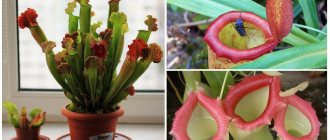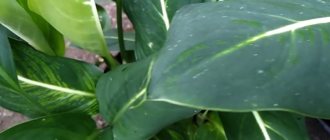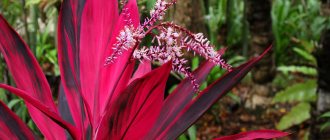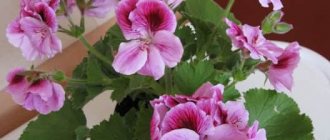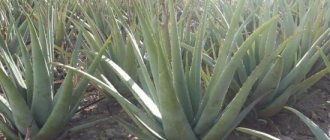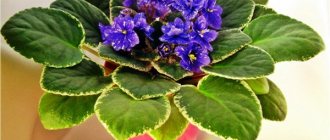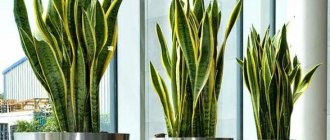General features of the plant
Aloe is a perennial plant belonging to the Asphodelaceae family. Modern botany includes more than 500 species of this crop. This genus belongs to succulents - organisms capable of accumulating nutrients. Therefore, it is highly resistant to changes in the external environment and has increased viability.
Depending on the species, the plant may be a shrub, tree, or herbaceous plant. The stems are usually shortened. Often they are not difficult to see under the leaf blades.
The leaves are collected in a basal rosette. They are arranged on the stem in a spiral. The plates are lanceolate or xiphoid in shape, pointed along the edge. When the plant is overwatered, the leaves increase in size, become elastic and hard. During periods of drought, leaves lose turgor and become smaller.
The color of the plates is represented by shades of green. Sometimes they have white stripes or stains. There may be spines or thorns on the sides of the plates.
You may be interested in:
Aloe: growing and care at home, propagation, photo The indoor aloe plant is very popular among lovers of home gardening....Read more...
Aloe is a flowering plant. Its small inflorescences are represented by tubes of white, yellow, orange or red. The inflorescences are located on a long flower-bearing arrow.
Healing effect
It is believed that the pulp of a plant that has reached the age of 4 years has the greatest therapeutic effect. The healing power and concentration of beneficial substances also depends on the soil in which it grows. You should also not neglect the rules for storing cut leaves. Pre-washed leaves should be wrapped in paper and kept in the refrigerator for 10-14 days. They can then be used to prepare medicinal products.
Aloe vera is unparalleled due to its unique chemical composition.
Amino acids are organic compounds necessary for the formation of protein. Amino acids are important for maintaining good health and mental alertness. These substances help fight chronic fatigue syndrome, viral infections and insomnia.
Enzymes are substances that accelerate processes in the body. They help break down polysaccharides and proteins, promote fiber absorption and prevent the accumulation of excess fluid in cells.
Polysaccharides help strengthen and accelerate cell regeneration processes.
This is interesting: Propagation of fuchsia by cuttings at home, how to root fuchsia
The pulp and juice contain a large amount of vitamins:
- Vitamin A is essential for healthy skin and bones. Helps fight free radicals.
- Vitamins B1 are indispensable for the proper functioning of the brain and increase vital activity.
- Vitamin B2 is important for the beauty and health of skin and bones.
- Vitamin B3 increases activity, promotes energy production, and speeds up metabolism.
- Vitamin B6 stabilizes hormonal levels.
- Vitamin C strengthens the immune system, promotes collagen production, and helps resist viral infections.
- Vitamin E is necessary for tissue restoration, promotes healing, “vitamin of youth”, improves the condition and appearance of skin, hair and nails.
- Vitamin B9 strengthens the nervous system and improves the functioning of brain cells.
Antioxidants are groups of organic compounds that neutralize free radicals and protect cell membranes from harmful factors. Antioxidants contribute to the healing of the body, renewal and rejuvenation of tissues.
Anthrachions (Anthracene, Anthracene, Imodin, Resistanol) are powerful antiviral and antibacterial substances that provide the regenerating and bactericidal effect of the juice.
Thus, the beneficial properties of the juice and pulp of the plant cannot be overestimated. It is used to treat a number of chronic diseases, as well as for general strengthening of the body.
For gastrointestinal diseases
Aloe vera juice has long been used to treat gastritis and peptic ulcers. Regular consumption of the drink with juice on an empty stomach heals the gastric mucosa and reduces the activity of gastric juice.
Since the juice contains substances that are powerful natural antibiotics, it is used to treat gastrointestinal diseases caused by various viruses (dysentery, intestinal infections, etc.)
Aloe juice is also known for its laxative effect, so it is used for chronic constipation. In such cases, you can also use sabur - yellow powder.
For pancreatitis, aloe juice promotes the outflow of bile and stimulates the pancreas. However, it is not recommended to treat pancreatitis in this way in a state of exacerbation of the disease and with increased secretion of the pancreas.
For diseases of the ear, nose and throat
Aloe juice has an antimicrobial and anti-inflammatory effect, so it is often used to treat ENT diseases.
For sinusitis caused by inflammation, aloe can be used as an adjuvant to increase the antiseptic and antimicrobial effect.
Aloe is used for the complex treatment of bronchitis and is used for exacerbation of asthma. The substances contained in the juice promote the removal of mucus and the renewal of mucous tissue.
Aloe juice is also sometimes used to treat prolonged annoying cough. In this case, the effect of healing irritated mucous membranes, removing sputum and fighting the virus that caused the disease is achieved.
For a runny nose, the juice is instilled into the nasal passages. In this way, mucous membranes are disinfected and the immune system is strengthened locally. It is recommended to dilute the juice with water to avoid dry nose.
Before contact with a patient with ARVI and during an outbreak of infections, it is also recommended to instill aloe juice into the nose.
In case of damage to the skin
Aloe contains natural antiseptics in large quantities. It is recommended to apply the sheet to cuts and abrasions. The gel, which is released when the sheet breaks, promotes tissue regeneration after burns. It is useful to apply the paste to an area of skin after a chemical or thermal burn.
The plant is used to draw out pus for various purulent inflammations and abscesses on the skin. Overall, aloe helps soften and soothe irritated skin and relieve redness and dryness.
For weight loss
Drinks based on aloe juice help normalize metabolism, which is why it is often used to combat excess weight. Natural antioxidants help cleanse the body from the effects of free radicals.
It is also known about the use of aloe for weight loss, associated with a pronounced laxative effect.
If you have a poor appetite, it is recommended to drink aloe juice. The substances it contains help produce enzymes that increase appetite.
Homeland and history of growing aloe
The exact location where the plant was discovered is unknown at this stage of the research. Based on the fact that this crop can grow only in warm climates, scientists are inclined to believe that only warm countries can be its homeland. It is generally accepted that the lands of Madagascar and South Africa are the birthplace of aloe.
The first mentions of culture appeared in 2000 BC. It is described in the Bible and historical chronicles. Cave paintings depicting a plant resembling a tree-like aloe were found by archaeologists during excavations of the tombs of the pharaohs of Ancient Egypt.
The culture was brought to Europe in the 18th century. Aloe was accepted as a gift by the husband of General Craig. It was she who first brought the plant from Africa to the UK.
Today, aloe can be found as an outdoor plant in the following places:
- Türkiye;
- Egypt;
- South and West Asia;
- Greece;
- Ethiopia;
- Somalia;
- SOUTH AFRICA;
- Zimbabwe;
- Mozambique;
- Swaziland;
- Malawi.
You may be interested in:
What varieties and types of roses are there? Modern roses originated from crossing European park roses with Asian roses - tea or Bengal roses. Now...Read more...
Origin and description of aloe species
Aloe is very popular in indoor floriculture. It can be found in almost every home. As a rule, gardeners grow 3 types of plants: Tree, Vera and Variegated varieties.
Treelike
The tree-like species (also called agave) is represented by trees or shrubs and is characterized by strong branching. South Africa is considered the birthplace of the plant.
Representatives of the species have an erect trunk, the thickness of which in natural growing conditions reaches 30 cm. At the bottom of the trunk of an adult bush there are numerous scars from leaves.
The leaves grow alternately, clasping the stem. They have a lanceolate shape. The edges of the plates are covered with spikes. The front part of the plates is somewhat concave, while the back part is, on the contrary, convex. The maximum leaf length of a representative of this species is 65 cm.
At the top of the stem, the leaves form dense rosettes. Most often, the color of the plates is a monochromatic bluish-green shade. But there are specimens with grayish leaves.
Representatives of the species are characterized by rather large inflorescences. The tubular flowers open like a bell. Drooping, six-petalled baskets are supported on thin stalks. They are collected in racemose inflorescences reaching up to 40 cm in length. The outer petals are orange, while the inner petals are white with a distinct orange longitudinal vein.
Faith
Aloe Vera is a herbaceous plant. In nature, this species can be found on the Canary Islands.
The chemical composition of Vera is very similar to the composition of the Tree species of this crop. Representatives of the species are characterized by a shortened trunk, which is practically invisible under the leaves.
The leaves grow strictly in order. The leaf axil almost completely covers the trunk. The shape of the plates is lanceolate, narrowed towards the edge. At the base of the stem, the leaves of Vera are collected in a dense rosette. Like the Tree species, the leaves of the Vera are concave at the top and convex at the bottom. The plates reach 60 cm in length. They are fleshy and thick, elastic to the touch. There are spines along the lateral edges of the plates.
This species is distinguished by its unusual leaf color. On a light green, as if faded, background, discreet white strokes are thickly applied.
The flowers are tubular, drooping. They are collected in an inflorescence located on a long flower-bearing arrow. The color of the petals varies from bright orange to orange-yellow.
You may be interested in:
How to distinguish volushki from saffron milk caps and how are they similar (20 photos)? Some of the most popular mushrooms in our country are considered to be mushrooms and saffron milk caps. These species are very similar to an inexperienced...Read more...
Motley
Aloe Variegated is also called Tiger Aloe. The species is native to South Africa and Namibia.
Representatives of this species are positioned as herbaceous plants and are characterized by very short stems. Leaves are placed in a spiral around the trunk. Due to the fact that the plates almost completely cover the stem, it is very difficult to notice. The trunk is widened at the base.
The leaves are collected in a basal rosette. The plates cannot be called long: in an adult plant they reach no more than 15 cm. Compared to Vera and Tree Aloe, the leaves of the Variegated species are much wider. Moreover, they are triangular rather than lanceolate in shape. The leaf blades are flattened, slightly thicker at the base than at the edge. On the sides of the plates there are underdeveloped spines, which are often confused with pile.
The leaf color consists of two colors. The main tone is a thick and rich shade of green. It is slightly lighter at the base and darker at the tip of the leaf. Transverse white patterns are applied across the entire surface of the plates, the pattern of which resembles a tiger. The sides of the sheet are edged with a thin white stripe.
This species blooms in late spring. Drooping flowers of bright orange color are collected in clusters of inflorescences. They are located on an erect flower-bearing arrow.
How to make agave bloom at home
It is generally accepted that aloe blooms only once every hundred years, which is why it is popularly called the agave.
But this is nothing more than a myth. Flowering can be achieved even in an apartment; the main thing is to properly organize the care of the plant at home, creating an environment for it that is close to natural. During the first 3 years, you should not wait for aloe to bloom. After reaching three years of age, the succulent needs to be replanted in the spring, and in the fall, when it stops growing green mass, begin preparing for wintering: provide lighting for 12-15 hours and dry air with a temperature of up to 13°C. If all necessary conditions are met, aloe will bloom in winter.
During this period, the plant shoots an arrow 40-50 cm long, at the end of which a panicle is formed from many future buds, yellow, orange or red - depending on the species. Their shape resembles elongated bells. Gradually, the buds open, but not all at once, but one by one, from bottom to top, and when the top ones bloom, the bottom ones are already fading. At this time, the pot with the succulent cannot be moved or moved to another place. The plant blooms for 6 months. After this, you need to carefully trim the stem so that it does not deplete the aloe.
There are more than 340 species of aloe in the world. The word aloe comes to us from the Arabic language; it means a perennial succulent plant that has fleshy stems and leaves.
Homeland of aloe vera
— South Africa and its East Coast islands. Here it grows on rocky soils among shrubs, in desert and semi-desert areas. Other types of aloe grow on the island of Madagascar and Arabia.
Aloe is an evergreen perennial plant of the lily family. This is a heat-loving plant; at ambient temperatures below +4 0 C, it dies. In nature, the plant reaches a height of up to 4 meters. Its root system is fibrous, the roots are cylindrical, long, and very branched.
The stem is branched, erect, abundantly covered with leaves arranged in a regular order.
Fleshy and juicy, up to 40 cm long, with a wide base covering the stem, curved and pointed towards the apex. They are smooth and matte, greenish-gray in color, flat on top, convex below.
The flowers are large, orange or red, tubular, with a six-toothed perianth, collected in a thick conical raceme. In its homeland, aloe blooms every year. - almost cylindrical box. The seeds are grayish-black, numerous.
Creating natural conditions during cultivation
Aloe is a very unpretentious plant, so it is easy to grow. The only thing the flower cannot tolerate is low air temperatures. The optimal conditions for growing the crop are presented in the following table.
| Care section | Description |
| Lighting | Bright sunlight. In winter, additional lighting is required. |
| Temperature | In the warm season, a temperature range from 18℃ to 30℃ is acceptable. In winter, it is recommended to lower the temperature, but not lower than 12℃. |
| Humidity level | Average or high humidity levels, typical for residential premises. |
| Watering | During the growing season - on demand (as soon as the top layer of soil dries out). During dormancy, it is recommended to limit watering to 2 times a week. |
| Top dressing | Not required. |
| Rest period | From October to April. |
| Transfer | In the spring. Young plants - annually, adults - once every 3-4 years. |
| Substrate | Turf soil, leaf soil, sand (2:1:1) |
| Drainage layer | Expanded clay, pebbles, broken brick. |
| Flower pot | Deep and wide. Be sure to have drainage holes and a removable tray. |
If not properly cared for, the plant can be affected by dry and root rot. Also, the flower may be susceptible to attacks by harmful insects: aphids, scale insects, mealybugs and spider mites.
Reproduction methods
Seminal
Sowing is carried out at the end of winter or beginning of spring.
- You need to lay a drainage layer at the bottom of the pot, then pour a suitable soil mixture (with a predominance of sand) in which to plant the seeds.
- Place in a ventilated place and regularly moisten the soil, not allowing it to dry out. The optimal temperature is about 20 degrees, while direct sunlight on the sprouts is unacceptable.
- After a month, the sprouted plants can be planted.
- Three months after this, they will need to be replanted again - into larger pots in which they will grow in the future. Such pots should be larger than required for plants of this size - a reserve is needed for the future. From now on, young aloe plants need to be cared for in the same way as adults.
How to propagate by shoots?
The soil mixture should be similar to that intended for adult plants, but have a larger amount of sand.
In spring or early summer, young shoots that grow from the roots and have their own part of the rhizome are separated from the mother bush and transplanted into a new container. The young plant will look stunted for the first few days , but will soon settle in and recover. From this moment on, it is indistinguishable from an adult aloe and requires the same care.
